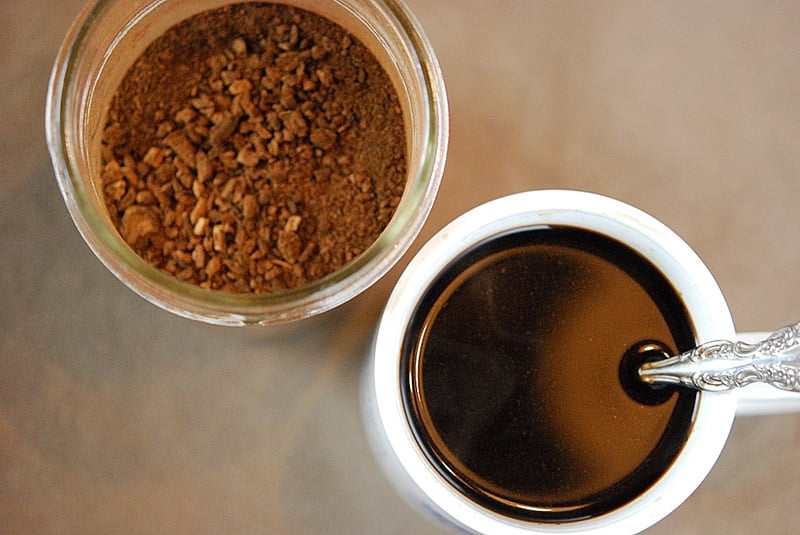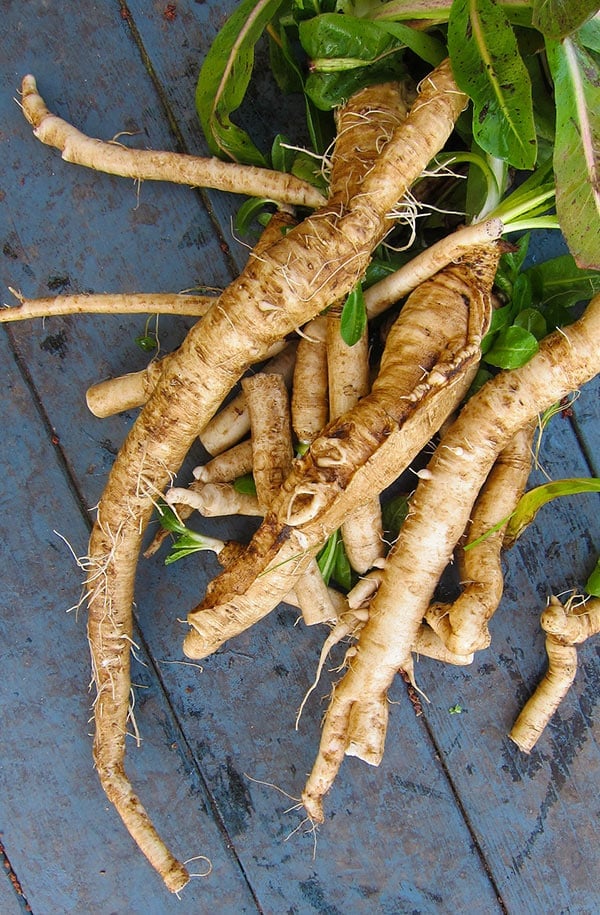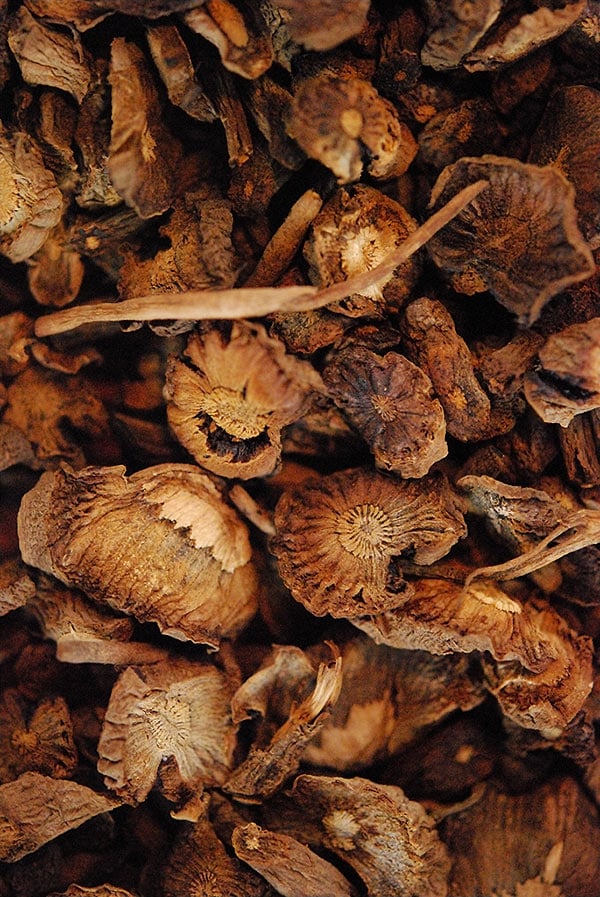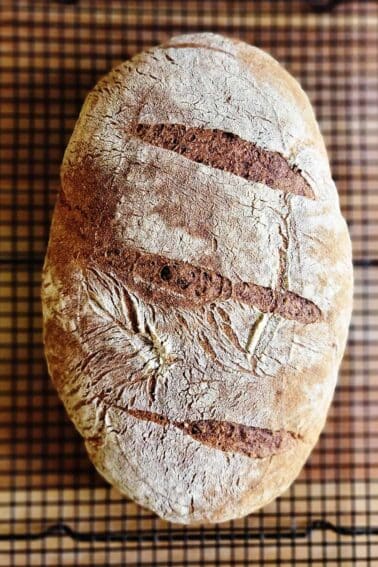As an Amazon Associate I earn from qualifying purchases.

For a time, my favorite coffee was New Orleans style, where the coffee is cut with roasted, ground chicory root. Chicory coffee is smooth, a little more acidic than normal coffee, with a taste and aroma similar to a mocha — and it makes a drink darker than the inside of a cow.
I used to Ozark it up even more by drinking it black, sweetened with molasses, not sugar. Definitely a manly drink, and probably the reason I have so much hair on my chest. I imagined lumberjacks or pioneers drinking this between cutting wood or fording wild rivers.
I was not in the habit of doing either, so I ultimately switched back to straight coffee. Actually I stopped because the canned chicory coffee I’d been buying grew pretty grim on my tastebuds over time; stale and dusty tasting. I never found anyone who made a premium version, so I left chicory coffee by the wayside.
I knew I could make my own by digging up the raggedy sailors — chicory is that weedy azure-blue flower that grows on a roadside near you. But I’d never bothered with it, as you need to dig in fall, and I only really notice this plant in summer when it’s flowering, or in early spring when I eat the greens.
But then I bought some “root chicory” seeds and planted them. Now I had absolutely no intention of making chicory coffee from them. I have a thing for crazy root vegetables, and it is my contention that if more locovores living in Northern climates grew a wider variety of roots, their winter menus would be far more interesting. I wanted to test this root out as a vegetable, so I planted it in my root bed next to the scorzonera I experimented with this year.
And then, as typically happens, life got in the way. I looked up and it was May already — while the chicory roots had not yet sent up flower stalks (except for one), they would be far too bitter and “hot” to eat as a veggie. Damn.
What to do with these things? I pulled one and was astounded at how large it was: A good 30 inches, with a base about two inches across. Christ, that’s a big root. And then I remembered my lumberjack coffee. But just how do you make chicory coffee?
I’d read a few sets of instructions that say just wash and dry the roots, then roast them in a moderate oven until “ready,” then break into pieces and grind into coffee-like grounds. I knew intuitively that this was false. I could not imagine breaking a root that was two inches broad into pieces small enough to not kill my grinder.

Other sets of instructions, mostly for making dandelion coffee (basically the same thing), call for slicing the roots into thin discs, then drying them, then roasting them, and then grinding them. This sounded more sane.
So I began slicing up the 20-or so large chicory roots I’d managed to pull. I ate a few raw, and they weren’t terrible: If something can manage to be sweet and bitter at the same time, these roots achieved that feat.
When I was doing this, it was 104°F outside. Not ideal oven drying weather, but perfect weather to dry things outside. And my “drying rack” of choice is the hood of my pickup. So I sat these sliced roots out in the sun, and they dried nicely in two days.
When it came time to roast the chicory, I found even more misleading instructions on the internet; yes, I know — misleading information on the internet?! Heavens! Everyone seems to say roast dandelion or chicory root in a 350°F oven for 10 to 15 minutes. Uh, yeah. You then have slightly warmer dried chicory roots. Nope, instead of 15 minutes, try 90 minutes, or even two hours. I might try 2 to 3 hours at a lower temperature next time.

I’d just like to say that even if you have no intention of actually drinking chicory coffee, it is worth roasting the roots this way. The whole house smelled wonderfully malty, chocolatey, warm. So lovely.
I let the roots cool overnight and ground them. Unfortunately they don’t seem to grind evenly, so I have powder mixed with chunks. But I use a press pot for my coffee, whose filter is enough to strain it all out.
I decided to brew myself a straight cup of chicory coffee. I put about a 1/4 cup into my press pot, the same amount I use for coffee, boiled some water and steeped the inky brew for about 5 to 8 minutes. I drank it black, with sugar.
Straight chicory coffee is some powerful stuff. it tastes like it is loaded with caffeine, but it isn’t. It looks a lot like motor oil, has that malty-chocolate aroma, a brighter acidity than coffee and a flavor I really am having trouble describing as other than with the cliche “earthy.” Guess that’s what I get for roasting a root.



